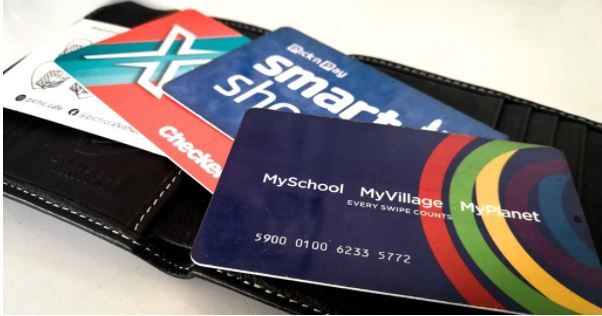
Loyalty Programmes are helping consumers make it through the month
Consumers continue to feel the pressure, with rising interest rate hikes coupled with skyrocketing food costs.
The Eighty20 XDS Credit Stress Report outlined how the double impact of rampant inflation and the 4.25 percentage point increase in the prime lending rate over the past 18 months have eaten into disposable income. Whilst Statistics South Africa outlined the food and beverage price inflation increase to 14% being the highest reading in 14 years.
With recent Capitec data echoing Eighty20’s findings that average instalments on home loans have gone up 26% in a year, and 15% for Vehicle Asset finance. Eighty20 data shows for the nearly 9-million people in the Mass Credit Market, credit card balances have ballooned 23% since last year.
South Africans are increasingly relying on credit cards and unsecured debt not to purchase assets, but to pay for the basic life necessities of food, education, transport costs and electricity. A worrying trend, that if continued it could send consumers spiralling into a debt cycle.
Borrowing for basic needs on the rise
FinScope, a nationally representative survey of more than 5,000 people delves into the purpose for which people borrow money. People are notoriously vague when answering questions around borrowing, and one should take responses with a grain of salt. However, in the 2022 survey, 23% of South Africans in households earning less than R10,000 per month said food was the main reason for borrowing money.
That means nearly 6.5-million adult South Africans claim to be borrowing to feed their families. For households earning more than R10,000 per month, clothes were highest at 17%, with food at 10%.
How loyalty programmes are keeping households afloat
Along with creating secondary sources of income such as side hustles, other strategies consumers are employing to make it to the end of the month include looking out for discounts and buying down, away from higher priced items. Here, loyalty programmes help consumers by not only offering cash back on purchases, but in changing behaviour by switching their customers to often cheaper house brands.
As an example, Clicks reported a 15.1% increase in private label sales in its half-year results to end February.
It comes as no surprise that the top 6 most used loyalty programmes in South Africa are either grocery or health and beauty retailers. According to the 2022 Truth & BrandMapp Loyalty Whitepaper, loyalty memberships are also growing with the average number of active memberships per customer increasing to just over 9.
According to BrandMapp’s research the top benefit enjoyed by loyalty members is redeeming for cash. Furthermore, 84% of customers say loyalty programmes influence where they shop, while 56% say it influences the products they purchase.
Given the proliferation of programmes, it is not surprising that there is a significant level of customer overlap across retailers. The BrandMapp research represents the top-earning 30% of the country, (12.8-million adults), living in households that earn more than R10 000 per month.
Using this study, it is interesting to see how the country’s top loyalty programmes appear to all share the majority of economically active consumers. Clicks ClubCard, the largest programme in SA, shares 70% of its members with Dis-Chem, its primary competitor.
86% of DisChem members are also Clicks ClubCard members. While 73% of Pick n Pay Smart Shoppers also have a Checkers Xtra Savings card, and 85% of Checkers loyalty members are also Smart Shoppers. In fact, all of the top 6 programmes share more than 70% of their members with each of the other programmes (with the exception of Woolworths and Spar).
High levels of cross-membership are relatively unchanged by income segment – it would seem that saving money or buying on discount is appealing, irrespective of one’s affluence. Although customers may have preferred retailers, it is clear that customers tend to shop at most of the main retailers.
“Customers generally are not as loyal to a particular retail brand as retailers would like to believe. In fact, customers are typically be more loyal to a brand of tomato sauce than the store they bought it from. Eighty20 also sees this behaviour using its Terain system, which observes anonymised customer movement from app location data,” says Steve Burnstone, CEO at Eighty20.
Using Constantia Village in the Southern Suburbs of Cape Town as an example. In the centre there is both a Woolworths and a Pick n Pay no more than 50m apart. Over the last 3 months, 38% of shoppers visiting the Pick n Pay also visited the Woolworths and 52% vice versa. In fact, almost a quarter of all shopping trips to Constantia Village involve customers visiting both stores.
With most customers already members of all the main retail loyalty programmes and looking to save money wherever they can, programmes need to be focussing less on how their programmes can acquire new members but rather how they can be using them as a tool to drive increased engagement through the smart use of cash back, discounts, personalised offers and gamification.
“Customers don’t mind jumping through a few hoops if there is a real chance that they can receive a meaningful benefit, especially if in these trying times it helps avoid dipping more into credit. All that is required is to deliver on a compelling proposition that encourages shoppers to step into your store first, before visiting your competitors,” concludes Burnstone.
News Category
- International retailers
- On the move
- Awards and achievements
- Legislation
- Wine and liquor
- Africa
- Going green
- Supplier news
- Research tools
- Retailer trading results
- Supply chain
- Innovation and technology
- Economic factors
- Crime and security
- Store Openings
- Marketing and Promotions
- Social Responsibility
- Brand Press Office
Related Articles

Empowering South African households through gro...

SPAR shares practical tips to beat food inflation

South African motorists could be paying up to R...

Big VAT changes on the cards


